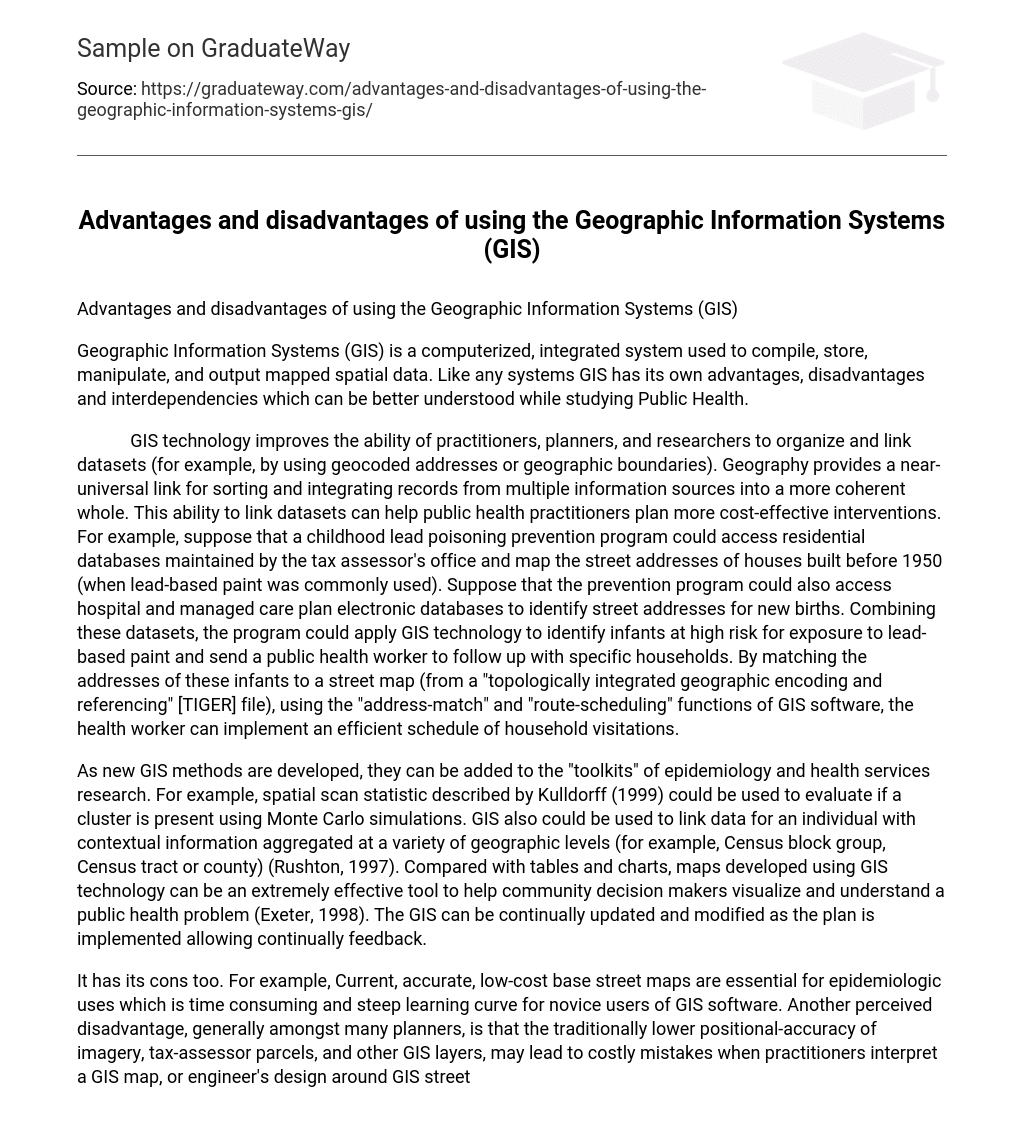Geographic Information Systems (GIS) is a computerized, integrated system used to compile, store, manipulate, and output mapped spatial data. Like any systems GIS has its own advantages, disadvantages and interdependencies which can be better understood while studying Public Health.
GIS technology improves the ability of practitioners, planners, and researchers to organize and link datasets (for example, by using geocoded addresses or geographic boundaries). Geography provides a near-universal link for sorting and integrating records from multiple information sources into a more coherent whole. This ability to link datasets can help public health practitioners plan more cost-effective interventions. For example, suppose that a childhood lead poisoning prevention program could access residential databases maintained by the tax assessor’s office and map the street addresses of houses built before 1950 (when lead-based paint was commonly used). Suppose that the prevention program could also access hospital and managed care plan electronic databases to identify street addresses for new births. Combining these datasets, the program could apply GIS technology to identify infants at high risk for exposure to lead-based paint and send a public health worker to follow up with specific households. By matching the addresses of these infants to a street map (from a “topologically integrated geographic encoding and referencing” [TIGER] file), using the “address-match” and “route-scheduling” functions of GIS software, the health worker can implement an efficient schedule of household visitations.
As new GIS methods are developed, they can be added to the “toolkits” of epidemiology and health services research. For example, spatial scan statistic described by Kulldorff (1999) could be used to evaluate if a cluster is present using Monte Carlo simulations. GIS also could be used to link data for an individual with contextual information aggregated at a variety of geographic levels (for example, Census block group, Census tract or county) (Rushton, 1997). Compared with tables and charts, maps developed using GIS technology can be an extremely effective tool to help community decision makers visualize and understand a public health problem (Exeter, 1998). The GIS can be continually updated and modified as the plan is implemented allowing continually feedback.
It has its cons too. For example, Current, accurate, low-cost base street maps are essential for epidemiologic uses which is time consuming and steep learning curve for novice users of GIS software. Another perceived disadvantage, generally amongst many planners, is that the traditionally lower positional-accuracy of imagery, tax-assessor parcels, and other GIS layers, may lead to costly mistakes when practitioners interpret a GIS map, or engineer’s design around GIS street addresses. GIS technology is currently not linked with community planning tools such as NACCHO’s Assessment and Planning Excellence through Community Partners for Health, and specialized GIS software products, including data entry forms and automated procedures. It would help public health practitioners’ map and plan interventions at the community level (Dean, 1999).
Reference:
Kulldorff M. Geographic information systems (GIS) and community health: some statistical issues. Journal of Public Health Management Practice 1999;5(2):100-6.
Rushton G. Improving public health through geographical information systems: an instructional guide to major concepts and their implementation [CD-ROM]. Version 2.0. Iowa City: University of Iowa, Department of Geography; 1997 Dec.
Exeter DJ. An evaluation of cartographic visualization techniques for epidemiology [master’s thesis]. Auckland [NZ]: University of Auckland Department of Geography; 1998.
Dean L. Revitalizing communities with geographic information systems (GIS): HUD’s Community 2020 software. Journal of Public Health Management Practice 1999. 5(4):47-53.
;





